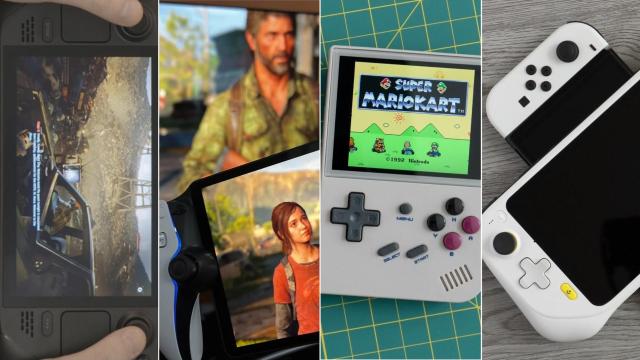This past year was a tipping point for the games industry. There have been some amazing, trend-setting releases alongside devastating industry turmoil, including mass layoffs, studio closures, and ballooning development costs. There’s a sense of foreboding entering into 2024, but there’s at least one thing we can glean from the chaos of 2023. The handheld console proved to be the hottest and best way to play games on the go or at home. The new portable paradigm has the ability to save the games industry from heartbreak, so long as the major publishers and console makers buy-in.
The major game studios took the wrong lessons from the expansion of mobile gaming. They thought players really enjoyed paying through the nose for every feature drip, character skin, or mini-expansion. Really, it was about access. Most people had phones, ergo, most people would play games on their phones.
But 2023 proved a whole other reason why game sales on phones are still more than double all the other consoles and PCs. It’s portability. It’s ease of access. It’s customizability. Guess which popular systems have all that in spades? The Steam Deck and all its contemporaries in the handheld console market have made gaming and game development far more accessible, and all on screens that max out at 9 inches wide with less than 90Hz refresh rates.
Forget high-fidelity graphics that few but the most expensive gaming rigs can maximize the polygon count. This past year was about scalability, with fewer people asking whether their PC was expensive enough to run the hottest releases and more people wondering if the game could run well enough on their Steam Deck or Asus ROG Ally. CDProjektRed took advantage of this early and made Cyberpunk: 2077 run surprisingly well on Steam Deck, and they’re much better off for it.
Nintendo realized more than seven years ago that players don’t necessarily care as much about graphics as they do about how a game looks and feels. The Legend of Zelda: Tears of the Kingdom may be buckling under the Switch’s old hardware, but few would try to claim the game doesn’t look gorgeous thanks to its pastel color palette and subtle cell shading. That game sold 19.5 million copies globally, not including digital sales. With 125 million total Switch units sold over the past seven years, do you think Nintendo is really so aggrieved that its hardware isn’t top of the line?
While smaller developers have been making handheld PCs for years, it took us until the end of 2022 for major manufacturers to take the example from what was easily the most popular game console of the past decade. What’s more important is that now there’s a long-rumored Switch sequel on the horizon for 2024, and based on what little we’ve heard, the next console will keep the same portability as the company’s last-gen hardware hit.
Yet it was Valve who finally flipped the switch (pun intended) on the true portable console experience. At this point, the Steam Deck is more than just a “Switch Pro” or a mobile desktop with a screen. The Deck is its own device capable of accessing far more than your Steam library. Linux-based SteamOS is still annoyingly buggy, but emulation and plugins have proved equally versatile on Valve’s premiere handheld. Now that the OLED Steam Deck with more storage space has taken over the top-selling space on Steam, the new Deck-like craze won’t die down anytime soon.
And that’s a good thing because competition is key to this new market’s success. Major PC makers Asus and Lenovo both have their own first rendition of the handheld console, both with their strengths and weaknesses. Lenovo’s Legion Go is a beast in terms of power and overall heft. It has issues, mostly that it’s too damn big to be very portable for most folks, but it’s rather innovative with its Switch-like snap-off controllers and attempts to add an FPS stick for playing shooters on the go.
The ROG Ally is a strong contender with better performance at near-Steam Deck prices, but it only falters thanks to worrying MicroSD slot problems. We hope more big names plant their own stake in the 2024 console market. Dell’s Alienware brand showed off its UFO concept three years ago, and we’d love to see it resurface.
But you can’t forget all the minor players as well. Ayaneo has a whole new line of portable PCs that really tug at that nostalgia factor with the Sidekick-like Ayaneo Slide and “Little Mac” Retro PC AM01. Other manufacturers had been deep into this space years before Valve first came in. We need the market to blossom so that the biggest console makers can finally see the writing on the wall.
The Biggest Console Makers are Still MIA in Handheld Devices, and They’re Holding Everyone Back
We haven’t seen as big of a mobile gaming paradigm shift since the original GameBoy debuted in 1989. What’s clear is that while smaller companies are at least interested in the handheld form factor, the biggest console makers are still holding out.
While Xbox hasn’t made any peep about any handheld hardware, the tech giant Microsoft seems to be slowing down its console-making role altogether. Instead, the focus is on software, and it could prove a winning strategy. Microsoft and Xbox execs have pretty much declared they’re hedging their bets on Xbox Game Pass. The service is compatible with pretty much all Windows-based and Android-centric systems, which, at this point, comprise most of the handheld PC market.
Xbox head Phil Spencer has pretty much confirmed the Asus ROG Ally is his handheld of choice in an August interview with Eurogamer. The problem is Windows 11 is a real pain in the posterior on gaming handhelds. It’s been this way for a while now, and Spencer seems to know this, tweeting all the way back in June, “We are focused on making the Xbox and GP experience great on devices like the Ally… more to do.”
That “more to do” could be an actual working version of Windows designed first for handhelds. The company recently made very small modifications to facilitate handhelds on the Xbox App, but we desperately need something that will work to launch the major game platforms like Steam and Epic Games Store more easily. Something as simple as a better touch keyboard and UI scaling are still missing. It’s wild we’ve waited this long with little more than side chatter from Microsoft.
More than that, though, this year’s more disappointing handheld consoles, such as the Razer Edge and Logitech G Cloud, focused solely on cloud and Android gaming. Both these devices have to compete against smartphones, especially since smartphone controllers like the Backbone One are far cheaper than any full device. It goes to show that software will only take you so far, and Game Pass can’t solely make it work without solid, supporting hardware.
Sony had a chance to release some kind of handheld console in 2023, but the company squandered it with the perfunctory PlayStation Portal that misses out on access to cloud gaming. However, it’s not like this past year wasn’t a success. The company declared in December that the PlayStation 5 surpassed 50 million units sold, with 25 million units thanks in part to a late-year push with the slimmed-down PS5. It’s one of its best holiday seasons to date, and Sony told Reuters it’s already meeting sales expectations.
Now, there are rumors we’ll see a PS5 Pro in late 2024. So, for right now, Sony seems to be keeping clear of any PS Vita debacles, which is understandable for such a massive corporation. However, PlayStation runs the risk that Microsoft’s Game Pass and cloud gaming beta will come and eat its lunch.
There have been so many handheld releases this year it’s a bit hard to keep track. There have been a few winners and many losers in the portable market, but at least there are a few to pick from. Click through the slides to get a sense of just how many companies, both big and small, have tried their hand at handhelds, which might help us see just where we hope things might go in 2024.
The One That Started it All: Nintendo Switch
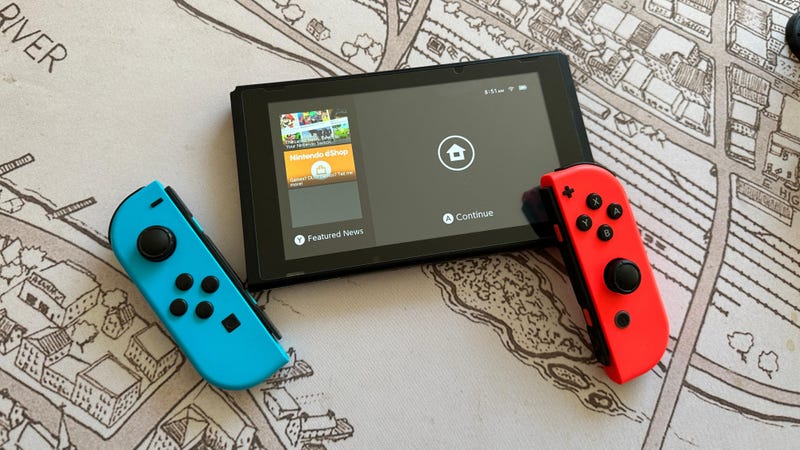
Yes, this is cheating since even the OLED Nintendo Switch is several years old now, but since there’s a rumored sequel console coming around the bend next year, it’s not the sort of console we can ignore.
Android/Cloud Portables: Logitech G Cloud
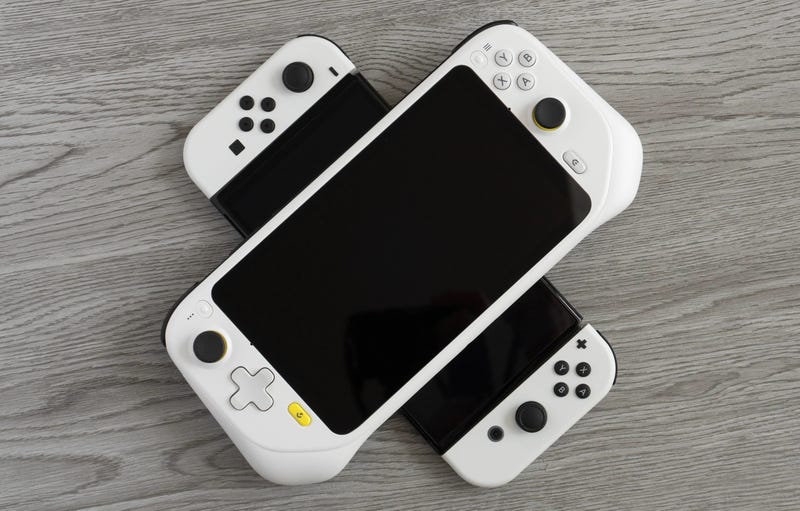
Amid the big-name PC makers dropping scaled-down PCs in a handheld format, a few opted for slightly cheaper, cloud-focused devices running on a version of Android. The Logitech G Cloud, unfortunately, couldn’t match the same versatility of other portable consoles, especially for its starting $US350 price tag.
Android/Cloud Portables: Razer Edge
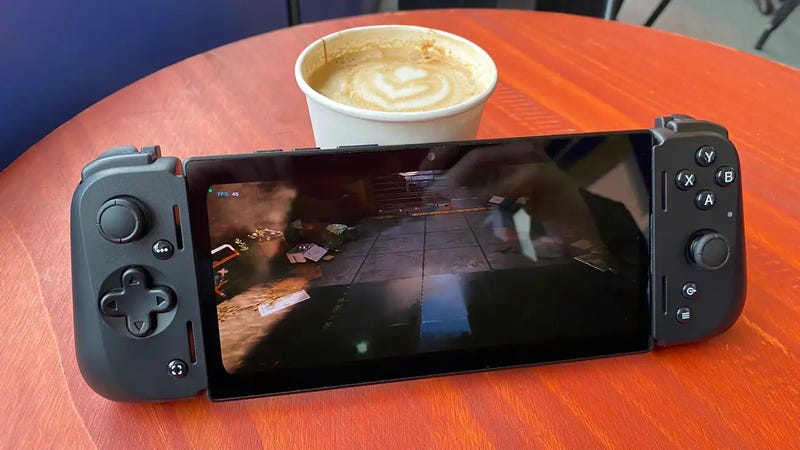
Like the G Cloud, the Razer Edge failed to show what distinguished it from a cheaper phone controller attached to your everyday smartphone. It essentially includes a special version of the company’s Kishi V2 smartphone controller attached to a tablet that runs an Android-based OS. Its 5G model costs $US600, for which you could buy a full-on portable PC and be far more satisfied, though perhaps the idea of a functional cloud-based handheld isn’t completely dead in the water.
Android/Cloud Portables: AYN Odin 2
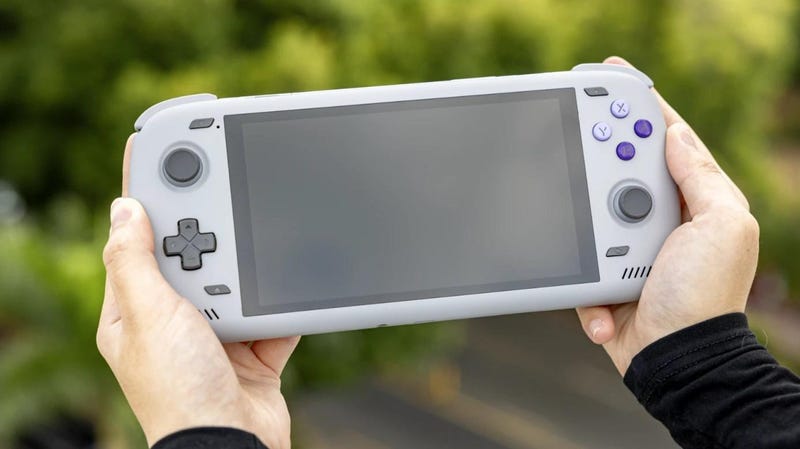
The $US299 AYN Odin 2 is the sequel to the original Odin with a boost in capability thanks to the Snapdragon 8 Gen 2 chip. It’s another Android-based device, which limits it in some major ways.
Handheld PCs: Steam Deck OLED
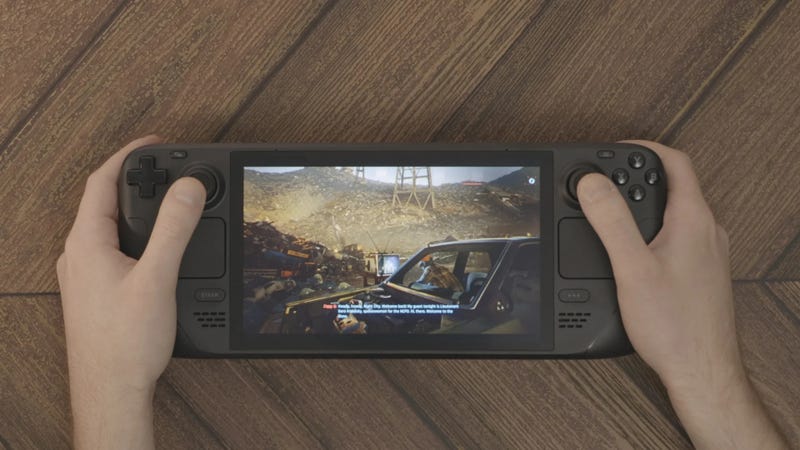
Easily the biggest handheld release of the year came from Valve thanks to its refreshed Steam Deck, which now sports an OLED screen and 1TB memory options. The Deck still lags behind other manufacturers in terms of pure specs, but it manages to stay on top thanks to all the developers who have managed to optimize their games specifically for Valve’s form factor.
Handheld PCs: Lenovo Legion Go
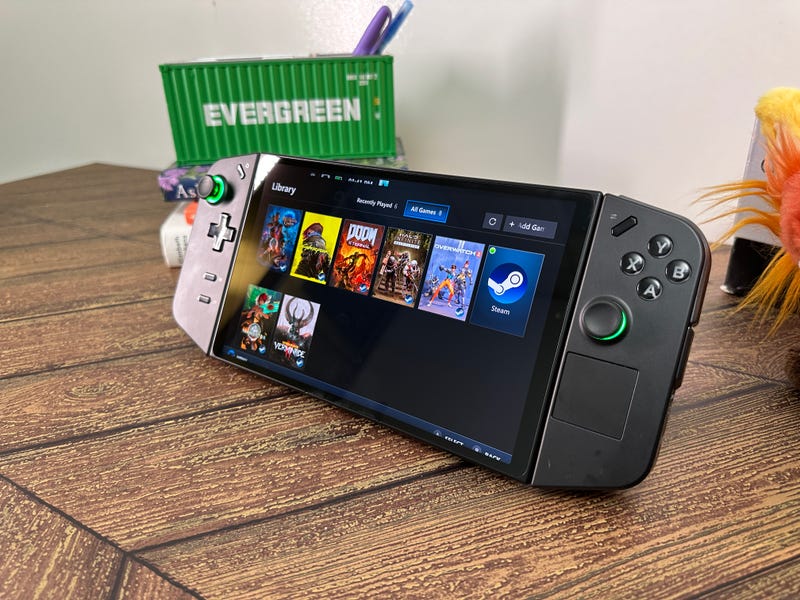
Lenovo went all out for its first portable PC, the Legion Go, and it stumbles a fair bit because of the company’s desire to make a hybrid Switch/Steam Deck that isn’t quite as good as either individually, despite its obvious size and power.
Handheld PCs: Asus ROG Ally
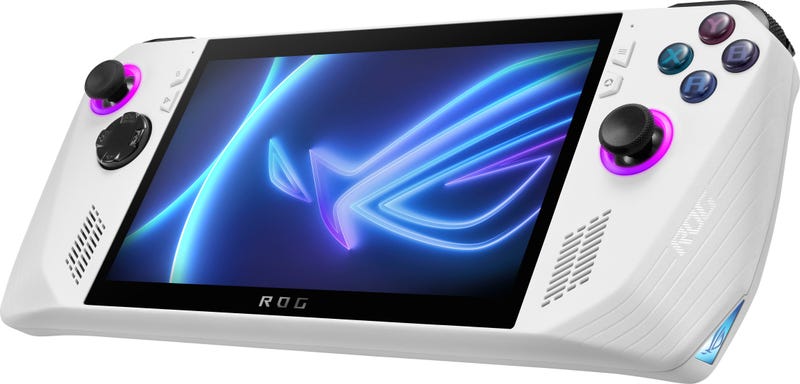
Asus’ ROG Ally was the first handheld console to really make a jab at Valve in the portable PC space earlier this year. It’s still a strong contender, and its design and power show that there’s room to grow in this form factor.
Handheld PCs: OneXPlayer OneXFly

OneXPlayer released several handheld PCs this year, including the $US1,000 Mini Pro powered by an AMD Ryzen 6800U. On the flip side, the OneXFly contains AMD’s high-powered mobile Ryzen 7 7840U CPU, making this $US1,100 portable PC a real threat even though it weighs a little less than 1.3 pounds and has a 7-inch screen.
Handheld PCs: Aokzoe A1 Pro
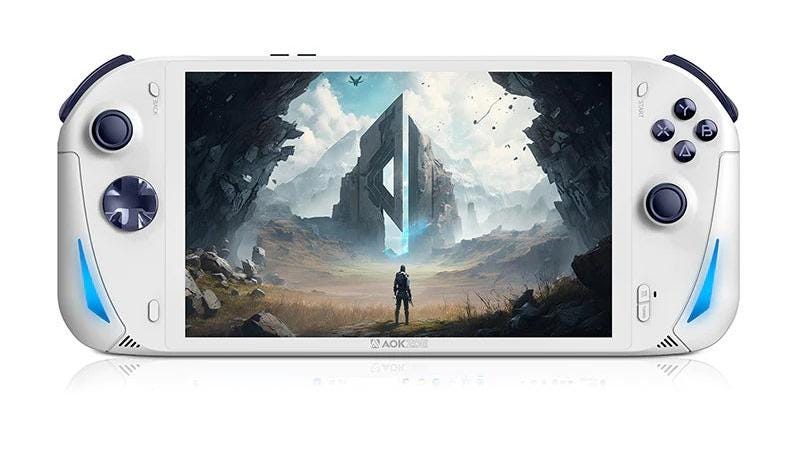
The $US1,000 A1 Pro boosts the screen size all the way to a full 8 inches, and with a 65Wh battery, it’s supposedly able to game at that large size for longer than most others in the market.
Handheld PCs: Ayaneo Geek
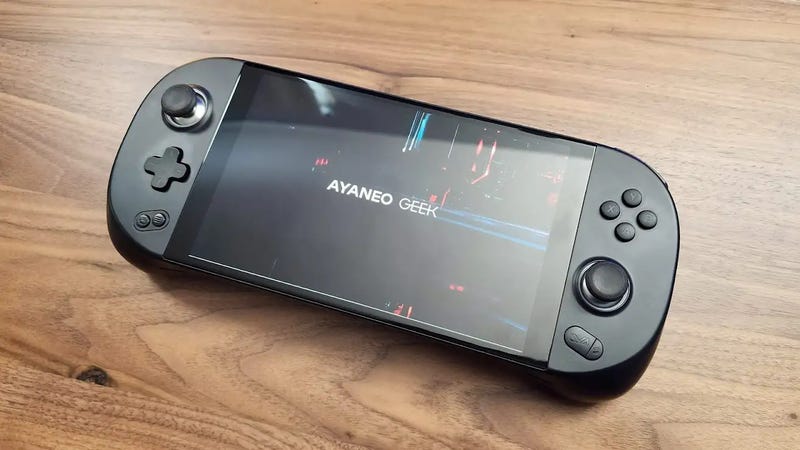
Ayaneo’s was on a roll in 2023, launching five handheld consoles through Indiegogo with some modicum of success. The Ayaneo Kun, Air 1s, 2s, and Geek all used the AMD Ryzen 7840U, while the Pocket Air was an Android-based handheld device. Since the company’s been at the handheld PC for a few years now, it makes sense the Ayaneo Geek locked in a few of the standard hits for this form factor, including solid performance and controls, though it was let down slightly by its unstable battery life.
Retro Throwbacks: Retroid Pocket 3+
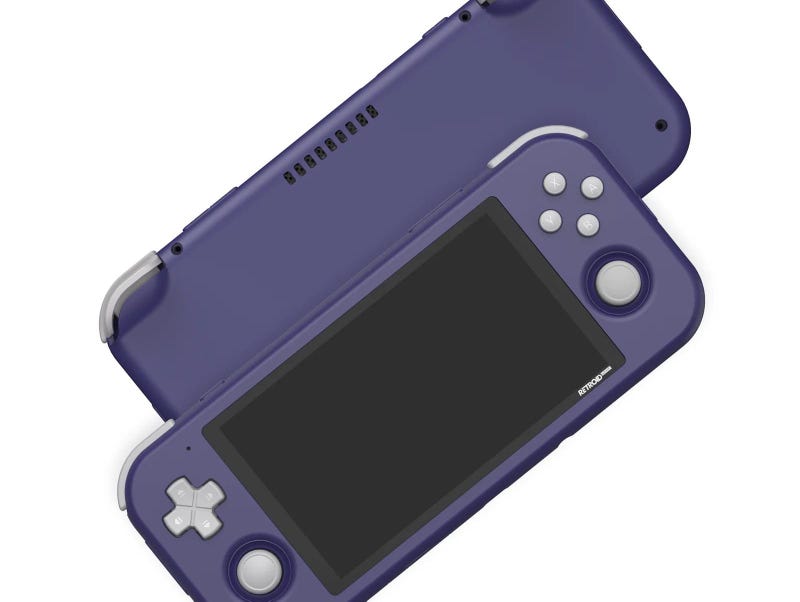
You can’t forget the mass influx of retro-styled portable players packing old-generation console specs inside a GameBoy-sized or even smaller case. The Android-based $US149 Retroid Pocket 3+ is the sequel to 2022’s 2+, increasing the screen size and boosting performance with new specs. It’s mostly geared toward emulation, but you should also be able to use most Android games on it.
Retro Throwbacks: Miyoo Mini Plus
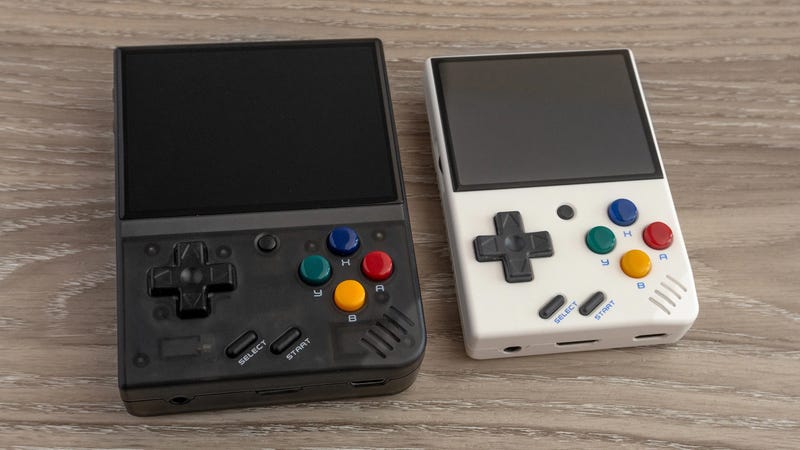
The return of the Miyoo Mini in a larger form factor heralded another way to emulate old games from the original GameBoy through the original PlayStation. Unfortunately, Gizmodo found that the screen on the $US67 Miyoo Mini Plus wasn’t much better than other kinds of mini consoles in this price range.
Retro Throwback: Anbernic RG35XX Plus
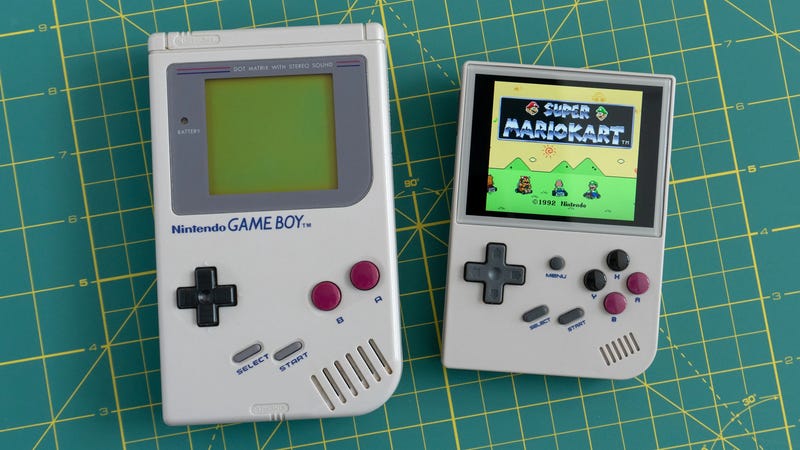
Anbernic released several Linux-based throwback devices this year, including the RG Nano and wider RG Arc-D. However, the RG35XX Plus proved to be one of the most solid old-school emulation devices of the year, not just because it has the same look and feel as the original GameBoy but because its controls and screens were also much better than others on the market.
Retro Throwbacks: HyperMegaTech! Super Pocket
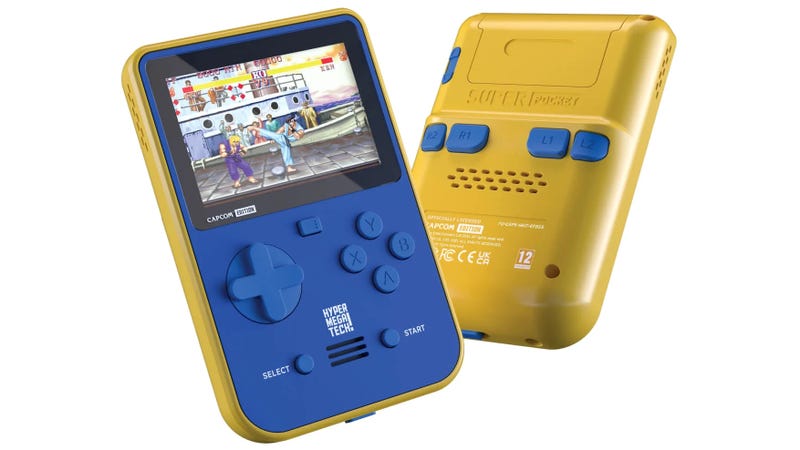
While other handhelds required users to install ROMs of older titles for the purpose of emulation, the Super Pocket came with a small collection of retro games pre-installed, and depending on which edition you get, you’ll get different colorways as well as different games. You can also expand the selection of titles with extra cartridges.
Not Quite a Handheld: Ayaneo Mini PC AM01
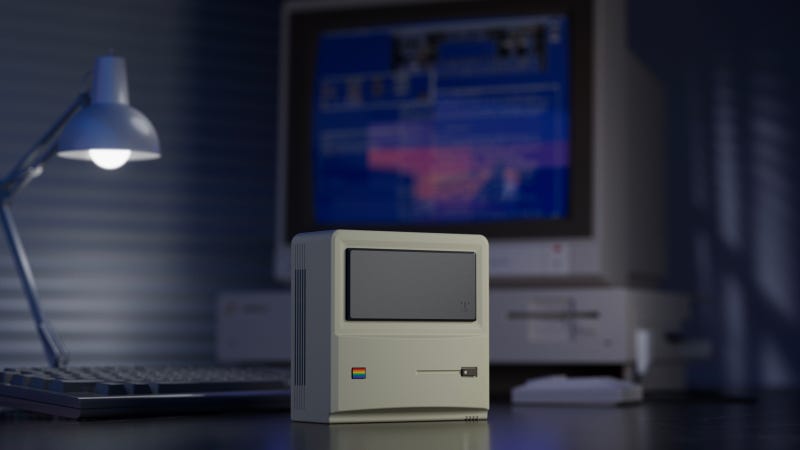
Some companies are trying to do more with the “portable PC” ethos, including Ayaneo, who developed a miniature PC that looks very similar to the original Macintosh. The Retro Mini PC AM01 contains up to an AMD Ryzen 5 5700U, meaning it should be plenty powerful for its pint-sized frame. We’re excited to try it and see if this is another use-case for portable gaming, and we’ll be sure to share more of our thoughts soon.
Not Quite a Handheld: PlayStation Portal
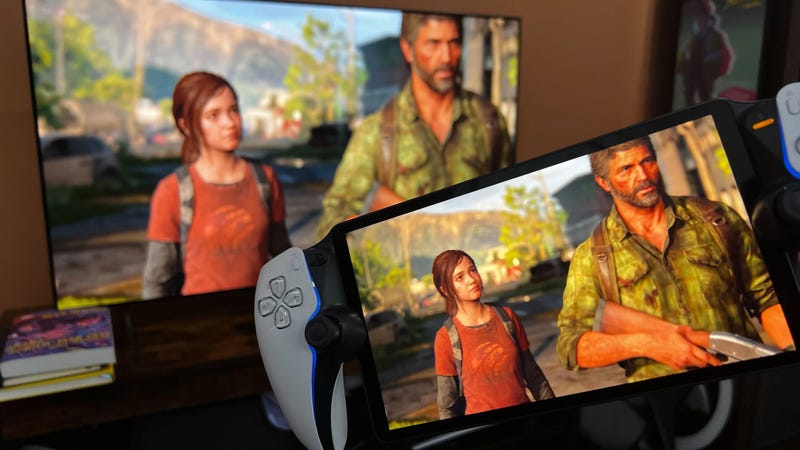
Sony’s almost-gaming handheld is essentially a screen attached to a DualSense controller meant to play your PlayStation 5 over WiFi. It works as intended, but it’s inherently limiting itself by not being able to play any of the PlayStation Plus streaming games.
